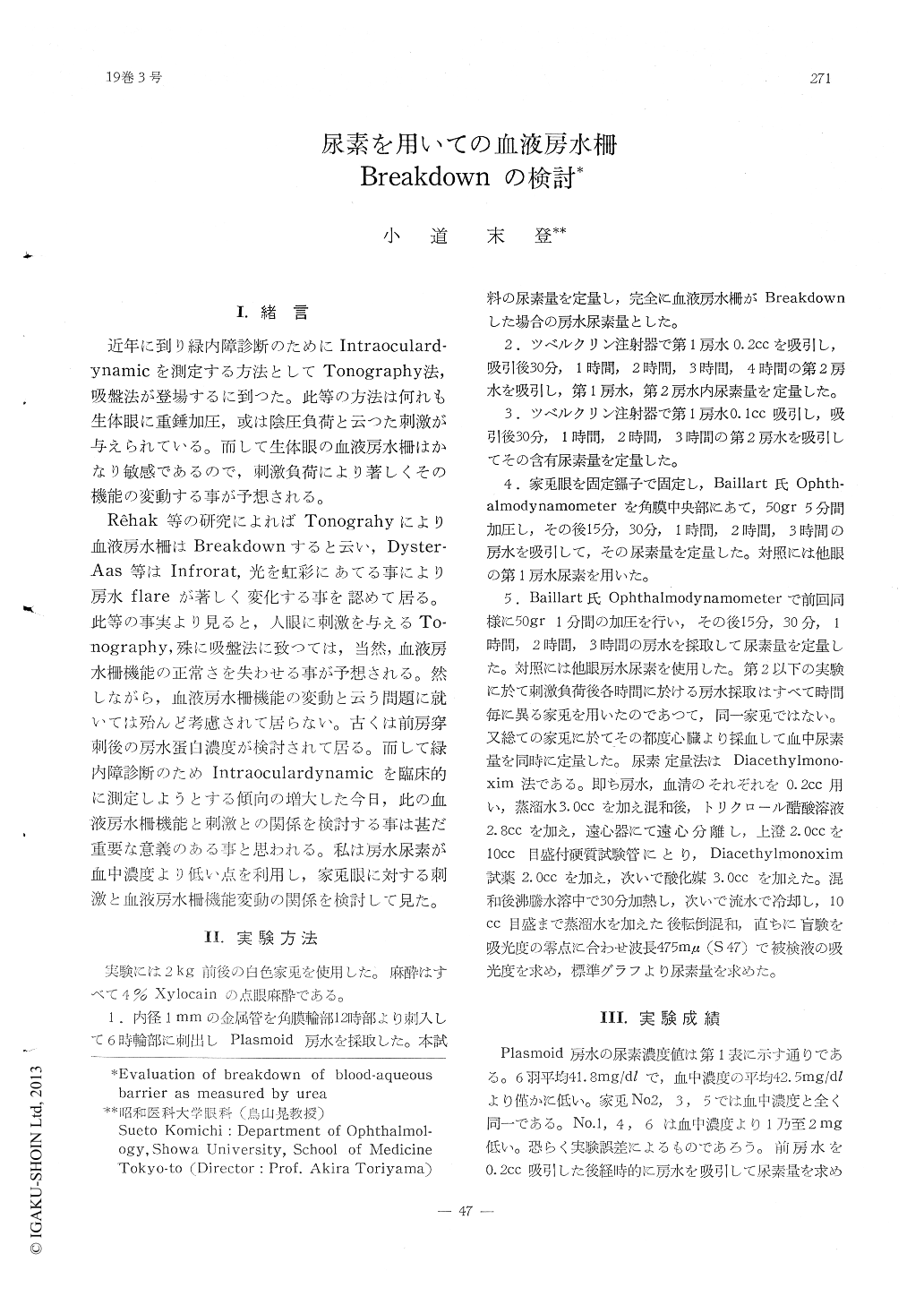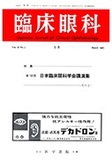Japanese
English
- 有料閲覧
- Abstract 文献概要
- 1ページ目 Look Inside
I.緒言
近年に到り緑内障診断のためにIntraoculard—ynamicを測定する方法としてTonography法,吸盤法が登場するに到つた。此等の方法は何れも生体眼に重錘加圧,或は陰圧負荷と云つた刺激が与えられている。而して生体眼の血液房水柵はかなり敏感であるので,刺激負荷により著しくその機能の変動する事が予想される。
Rêhak等の研究によればTonograhyにより血液房水柵はBreakdownすると云い,Dyster—Aas等はInfrorat,光を虹彩にあてる事により房水flareが著しく変化する事を認めて居る。此等の事実より見ると,人眼に刺激を与えるTo—nography,殊に吸盤法に致つては,当然,血液房水柵機能の正常さを失わせる事が予想される。然しながら,血液房水柵機能の変動と云う問題に就いては殆んど考慮されて居らない。古くは前房穿刺後の房水蛋白濃度が検討されて居る。而して緑内障診断のためIntraoculardynamicを臨床的に測定しようとする傾向の増大した今日,此の血液房水柵機能と刺激との関係を検討する事は甚だ重要な意義のある事と思われる。私は房水尿素が血中濃度より低い点を利用し,家兎眼に対する刺激と血液房水柵機能変動の関係を検討して見た。
Following the withdrawal of aqueous hu-mour from the anterior chamber, the accumu-lation of a certain quantity of aqueous humour is required before the blood-aqueous barrier restores its normal functions.
The blood-aqueous barrier probably resto-res its normal functions upon accumulation of the normal quantity of aqueous humour.
It appears, moreover, that the functional stimulations of varying intensities, within a limit of a certain degree, cause the devel-opment of changes in the blood-aqueous ba-rrier functions of no appreciable difference.

Copyright © 1965, Igaku-Shoin Ltd. All rights reserved.


